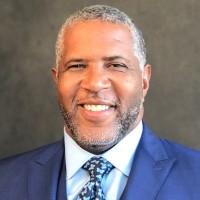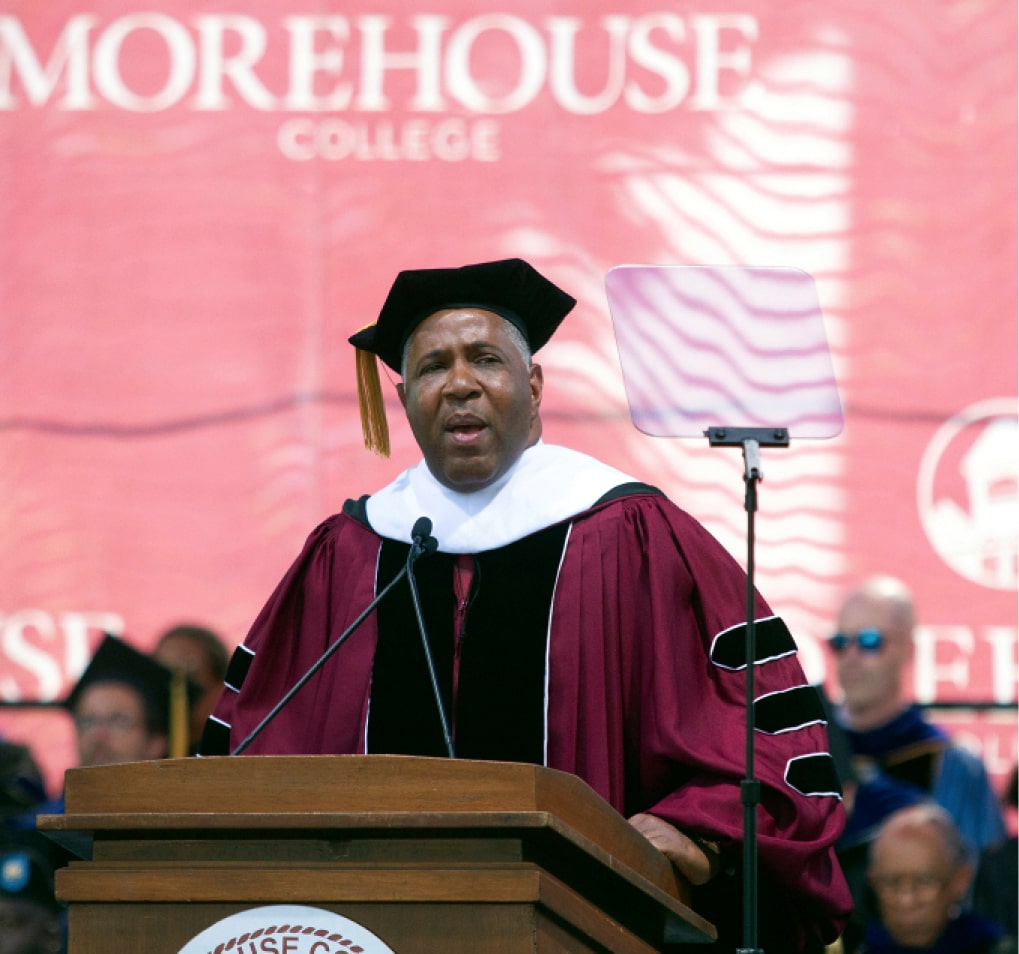Key Takeaways:
- Male STEM professionals account for more than double the number of female STEM professionals.
- The lack of women in STEM emerges from a wide range of societal and cultural factors, including a shortage of female role models and bias in the STEM industry and pressure to compromise work and life balance.
- Notable women in STEM include astronaut Dr. Ellen Ochoa and mathematician Ada Lovelace.
Women have bravely traveled to space and made advancements in nuclear physics. Their work developed the foundation of computer programming and created treatments for infectious diseases. And, they have excelled in STEM (science, technology, engineering and math) education.
For decades, women have broken barriers in STEM. Yet, despite these contributions, women have been largely underrepresented in STEM fields. Often, their voices and contributions have been overlooked, forgotten and undervalued.
Ahead, we explore the current state of women in STEM and why there is a lack of women in STEM fields. Additionally, we highlight the stories of five famous women in STEM and ways we can close the STEM gender gap.
The Current State of Women in STEM
In recent years, we have witnessed advancements in closing the STEM gender gap. However, the percentage of women in STEM is less than half that of male STEM professionals. According to 2021 data from the National Center for Science and Engineering Statistics (NCSES), there are 34.9 million STEM professionals. Men comprise 22.6 million (about 65%) of that 34.9 million, compared to 12.3 million females (about 35%). Additionally, 2024 data from the National Girls Collaborative Project (NGCP) shows that Latina, Black and Indigenous women account for less than 10% of the entire STEM workforce.
This disparity is not limited to professional settings; it is also present in primary, secondary and post-secondary education institutions. NGCP data reveals that the academic performance of females in math and science is the same as their male counterparts. In fact, many young women complete advanced science and math courses. However, they do not pursue higher-level physics and computer science courses as part of their secondary STEM education.
This trend translates to their higher education pursuits. For instance, women earn the majority of bachelor’s degrees in all fields at 58%, but only 24% in engineering, 21% in computer science and 24% in physics.
Why Is There a Lack of Women in STEM?
The lack of women in STEM is due to a complex range of longstanding societal and cultural factors. In the past, STEM fields were thought of as male-dominated roles, which led to stereotypes that discouraged (and continue to discourage) women from pursuing these fields. Other factors that perpetuate the STEM gender gap include:
- A lack of female role models
- Unconscious bias that impacts the hiring and promotion practices in organizations
- Pressure to compromise work/life balance



Linkedin Exclusive



Get Industry leading insights from Robert F. Smith directly in your LinkedIn feed.
Get Industry leading insights from Robert F. Smith directly in your LinkedIn feed.
Five Famous Women in STEM
Women in STEM, such as chemist and physicist Marie Curie and statistician Florence Nightingale, are well known., While their contributions were significant, countless other women in STEM from the past and present are also worthy of recognition. Ahead, we explore five famous women in STEM.
1. Ada Lovelace
Not only was Ada Lovelace a mathematician, but she was widely known as the first computer programmer. Born in 1815 in London, England, Lovelace was educated by private tutors and was encouraged by her mother to study math — an uncommon topic for women to learn at the time. At 17, she attended a party where she met mathematician and inventor Charles Babbage, who became her mentor. Although Lovelace married and had children, she made her work with Babbage a priority. In particular, Lovelace helped Babbage with his Analytical Engine, known as the first general computer.
Eventually, Babbage asked Lovelace to translate text his engineer wrote about the engine in French into English. Lovelace added her own notes along with her translation. Among her additional notes, she explained how the engine could be programmed to follow a set of instructions and could work with other things beyond numbers. Her proposal that a machine can manipulate symbols from a set of instructions marked a pivotal transition from basic calculation to the dawn of computation.
Sadly, the engine was never created and she passed in 1852. While Lovelace’s notes were forgotten for decades, they were eventually published in a 1953 book about digital computing.
2. Alice Ball
Alice Ball was a chemist who created the first treatment for Hansen’s disease, also known as leprosy. Ball was born in 1892 in Seattle, WA, but her family moved to Hawaii. Throughout high school, Ball excelled and went on to earn several degrees. Between 1912 and 1914, she earned B.S. degrees in pharmaceutical chemistry and pharmacy. Afterward, Ball started studying at the College of Hawaii, now known as the University of Hawaii. When she graduated, she became the first Black American and the first woman to earn an M.S. in chemistry in 1915. After graduation, Ball accepted an offer to become the university’s first female professor and researcher at 23 years old.
In the lab, Ball worked hard to research a treatment for Hansen’s disease. Eventually, her research led to the formation of the first injectable leprosy treatment. Dubbed the “Ball Method,” her treatment helped patients around the world. Unfortunately, Ball passed tragically in 1916 in a lab accident at just 24 years old.
3. Dr. Chien-Shiung Wu
Dr. Chien-Shiung Wu, also known as “the First Lady of Physics,” was a brilliant physicist who made significant contributions to the Manhattan Project., Born in 1912 in Liuhe, China, Wu developed a passion for math and science at an all-girls school her father established., In 1934, Wu earned her B.S. in physics at the National Central University.
After college, she traveled to the U.S. to complete her Ph.D. at the University of California at Berkeley. Later, Wu accepted an offer to become the first female instructor at Princeton University. Shortly after she accepted the position, she was asked to become a senior scientist for the Manhattan Project at Columbia University. Her work was critical to the success of the project and established her as a leader in nuclear physics.
In 1956, theoretical physicists Tsung-Dao Lee and Chen Ning Yang contacted Wu about creating an experiment to test their theory about the law of conservation of parity. The experiment she created validated Lee and Yang’s claims and was later named the Wu Experiment after her. In 1957, Lee and Yang received the Nobel Prize in Physics, but Wu was snubbed. Wu worked and researched at Columbia University until 1981 when she retired. She passed away in 1997.
4. Shirley Ann Jackson
Shirley Ann Jackson is a physicist who formerly served as the head of the U.S. Nuclear Regulatory Commission (NRC). Additionally, she is among the first two Black American women to earn a doctorate in physics in the U.S.
Jackson was born in 1946 in Washington, D.C., to parents who encouraged her passion for science. In 1964, she graduated from high school as the valedictorian and went on to study at the Massachusetts Institute of Technology (MIT). Jackson was one of the first Black American students to attend MIT and was one of two women in her undergraduate class.
In 1973, she graduated from the university with her Ph.D. in theoretical elementary particle physics. Among her professional accomplishments, Jackson was a part of the technical staff for Bell Laboratories in theoretical physics. In 1976, she became a professor of physics at Rutgers University. Later on, former President Bill Clinton made Jackson the chair of the NRC. A few years later, she helped form the International Nuclear Regulators Association and was inducted into the National Women’s Hall of Fame. Today, Jackson continues to be a role model and advocate for underrepresented communities in STEM.
5. Dr. Ellen Ochoa
Dr. Ellen Ochoa became the first Latina astronaut to travel into space in 1993. Ochoa also served as the 11th director of NASA’s Lyndon B. Johnson Space Center — she was its first Latina director and second female. Born in Los Angeles, CA, Ochoa graduated from San Diego State University in 1980 with a B.S. in physics. She then earned her M.S. and doctorate in electrical engineering from Stanford University.
In 1988, Ochoa started working at NASA as a research engineer. Two years later, NASA selected her to become an astronaut and transferred her to the Johnson Space Center. She logged more than 950 hours in space between her four space flights as a mission specialist and flight engineer. During her tenure, Ochoa was honored with two of NASA’s most prestigious awards, the Distinguished Service Medal and the Presidential Distinguished Rank Award.
Ways We Can Close the STEM Gender Gap
Increasing the representation of women in STEM fields is not only the right thing to do; it is critical for the progress of society. If STEM continues to lack equal representation from at least half of the population, we will miss out on unique perspectives that can inspire innovation.
However, the gender gap in STEM is a longstanding issue that requires a concerted effort on several fronts. We must adjust our strategies, ways of thinking and actions to create academic and professional settings that embrace diversity. Below are a few other ways we can take action:
- Highlight female role models in STEM
- Encourage young women to pursue STEM-related classes and majors
- Inspire excitement about the opportunities in STEM
- Offer hands-on experience
- Develop mentorship programs
- Commit to and practice fair recruiting, hiring and promotion processes
To learn more about women in STEM and other engaging topics, follow Robert F. Smith on LinkedIn.







